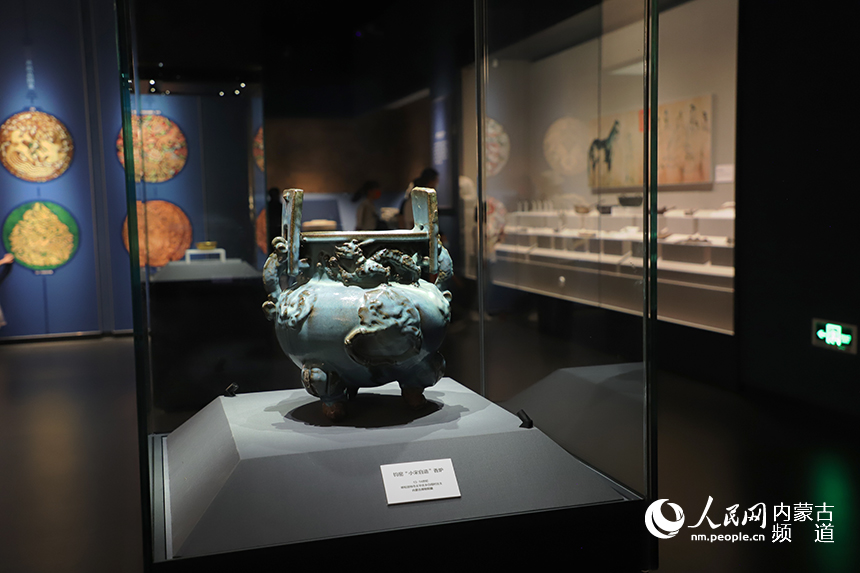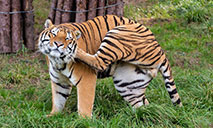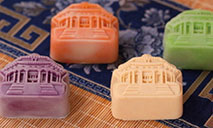Cultural relics in Inner Mongolia Museum reveal exchange and coexistence of cultures in the ancient past (12)
 |
| Photo shows an incense burner dating back to the Yuan Dynasty (1271-1368). (People’s Daily Online/Zhao Mengyue) |
The Inner Mongolia Museum, located in Hohhot, capital city of north China’s Inner Mongolia Autonomous Region, is a place where visitors can catch a glimpse of a rich collection of cultural relics that were a part of the frequent cultural exchanges and waves of integration between border areas and Central China throughout Chinese history.
A large number of precious cultural relics from ancient times show that people worshiped and admired the moon during the Mid-Autumn Festival and looked forward to the opportunity for a reunion of family and friends. The concepts of stability, unity, and prosperity were also integrated into the cultural connotation of “tuanyuan” or reunion. With the Mid-Autumn Festival around the corner, reporters from People's Daily Online made a visit to the Inner Mongolia Museum to look for exhibits that embodied this historical and culturally significant notion of reunion.
A bronze kettle with exquisite patterns featuring dancing human figures and animal designs is a vivid display of the cultural integration between different civilizations in ancient China. Dating back to the Spring and Autumn Periods (770-476 BC), it is the only bronze kettle of its kind that was carved with animal designs and figures of ancient nomadic peoples. It has been classified as a first-class cultural relic in China.
An eaves tile symbolizes the marriage between Wang Zhaojun, a palace lady-in-waiting living over 2,000 years ago in the Han Dynasty, and the leader of the Xiongnu, a powerful nomadic tribe. The marriage ensured peace on Han Dynasty’s northern frontier. It was unearthed in a Han tomb 5.5 kilometers away from an ancient urban site in the city of Baotou, which is about 150 km west of Hohhot.
A silver plate featuring Capricorn and golden flower patterns was a part of the cultural exchanges between China and the wider world during the Liao Dynasty (916-1125). The silver ware is in the shape of a six-petal flower and is 7.4 centimeters at its widest point. The middle of the plate was carved based on fire-shaped jewelry and two Capricorn patterns. The patterns and the craftsmanship of the plate are an indication of the close cultural exchanges between the East and the West in ancient times.
A brass plaque worn by soldiers when they patrolled the capital of Shangdu of the Yuan Dynasty (1271-1368), is the only one of 17 plaques belonging to the Yuan Dynasty that was inscribed with five languages. It is a first-class cultural relic in China. Besides words indicating the job title of the soldier that can be seen on the plaque, the plaque was also written with characters in five languages, which reflects the coexistence between different ethnic groups in the Yuan Dynasty.
A staff member with the Inner Mongolia Museum introduced that during the upcoming Mid-Autumn Festival, the museum will host a series of activities for visitors to experience traditional culture and take part in a happy and informative festival.
 |  |
Photos
 Bumper harvest presents a magnificent scene of terraced rice paddies in SW China's Luzhou city
Bumper harvest presents a magnificent scene of terraced rice paddies in SW China's Luzhou city In pics: life of Siberian tigers in NE China's breeding center
In pics: life of Siberian tigers in NE China's breeding center Explore wonderland created by an alpine lake cluster in SW China's Yunnan
Explore wonderland created by an alpine lake cluster in SW China's Yunnan In pics: Museums across China unveil creative and culturally-inspired mooncakes
In pics: Museums across China unveil creative and culturally-inspired mooncakes
Related Stories
- China retrieves 58,000 relics in law enforcement campaign
- Hong Kong holds cultural relics exhibition in MTR station for first time
- Cultural relic-themed creative products receive high praise from consumers
- Chinese police crack over 1,360 cultural relics cases
- China's relic-rich Shaanxi hosts over 1,000 grotto temples
Copyright © 2021 People's Daily Online. All Rights Reserved.






